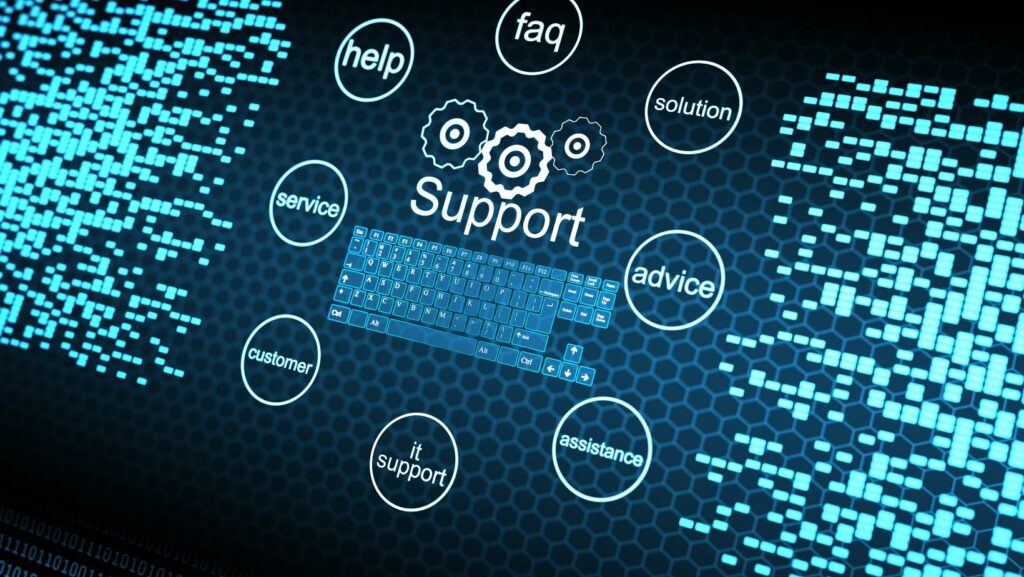Ransomware attacks have become one of the biggest business threats, causing financial losses, data breaches, and operational disruptions. These attacks involve cybercriminals encrypting critical data and demanding payment in exchange for its release. Without proper security measures, businesses risk losing access to vital information, facing reputational damage, and suffering long-term consequences. IT support is crucial in defending against ransomware by implementing security strategies, monitoring networks, and training employees to recognize potential threats. We will explore how business IT support helps prevent ransomware attacks by strengthening cybersecurity defenses and responding quickly to suspicious activity. Taking proactive measures ensures that businesses can operate securely while minimizing the risk of falling victim to cybercriminals. Preventing ransomware is about using the right technology, fostering awareness, and building a security-focused culture within the organization.
Ways Business IT Support Helps Prevent Ransomware Attacks
1. Monitoring Networks for Unusual Activity
Ransomware attacks often begin with unauthorized access to a business’s network. IT support teams continuously monitor network activity to detect signs of an attack before it causes significant damage. Unusual patterns, such as sudden spikes in data transfers, unexpected logins, or system setting changes, may indicate a potential breach.
Monitoring systems use automated alerts to notify IT professionals of suspicious behavior.

When anomalies are detected, IT support investigates the activity and immediately prevents ransomware from spreading. This could involve isolating an infected device, blocking unauthorized access, or shutting down compromised accounts before further damage occurs.
Constant network monitoring also helps identify vulnerabilities that cybercriminals could exploit. If weaknesses are detected, IT support applies security patches, strengthens access controls, and reinforces firewall protection. Preventing unauthorized entry into the network reduces the risk of ransomware infections and keeps critical business data secure.
2. Implementing Strong Access Controls and Authentication
One of the most effective ways IT support helps prevent ransomware is by managing user access and authentication. Cybercriminals often target weak passwords or unsecured accounts to gain entry into a system. IT support enforces strict access controls to ensure only authorized personnel can access sensitive data.
Multi-factor authentication (MFA) adds an extra layer of security by requiring users to verify their identity through multiple steps, such as entering a password and confirming a login attempt through a mobile app. This prevents attackers from accessing accounts even if passwords are compromised.
Role-based access control (RBAC) limits user permissions based on job responsibilities. Employees only have access to the data and systems necessary for their work, reducing the risk of an attacker gaining full network control through a single compromised account. By enforcing secure authentication methods and access restrictions, IT support minimizes opportunities for ransomware attacks to succeed.
3. Providing Employee Training on Ransomware Prevention
Ransomware attacks often begin with phishing emails or malicious links that trick employees into downloading malware. IT support provides training programs to educate staff about recognizing suspicious messages, avoiding harmful attachments, and verifying the legitimacy of requests before clicking on links.
Simulated phishing tests help employees practice identifying fake emails in a controlled environment. These tests reveal common tactics used by cybercriminals, such as urgent messages pretending to be from company executives or deceptive invoices from fake vendors. By regularly conducting awareness training, IT support strengthens employees’ ability to spot potential threats.
Encouraging safe browsing habits and proper email security protocols also reduces the risk of ransomware infections. Employees learn to avoid downloading unknown files, using personal devices for work-related tasks, or sharing sensitive information with unverified sources. A well-trained workforce acts as a strong line of defense against cyberattacks.
4. Keeping Software and Systems Updated
Outdated software is a major security risk, as cybercriminals frequently exploit known vulnerabilities to deploy ransomware. Computerease IT Support of Chicago ensures that all business systems, applications, and security programs receive regular updates and patches. These updates fix weaknesses in software and strengthen defenses against evolving threats.
Automated patch management tools help IT support keep systems secure without requiring manual intervention. Critical updates are applied promptly to prevent delays that could leave systems exposed. Businesses using outdated operating systems or software versions face an increased risk of cyberattacks, making timely updates essential.

Firmware and security software, such as antivirus programs and intrusion detection systems, also require regular maintenance. IT support configures these tools to detect and block ransomware before infiltrates the network. Ensuring that all technology remains current significantly reduces the likelihood of successful attacks.
5. Backing Up Data and Creating Recovery Plans
Even with strong security measures in place, businesses must prepare for the possibility of a ransomware attack. IT support implements data backup solutions to ensure that essential files remain accessible despite an attack. Regular backups allow businesses to restore data without ransom, reducing financial losses and downtime.
Backups should be stored in multiple locations, including secure cloud storage and offline backup drives. IT support establishes automated backup schedules to ensure that data is continuously protected. Encrypting backup files adds an extra layer of security, preventing cybercriminals from accessing or altering stored data.
A disaster recovery plan outlines the steps to take during a ransomware attack. IT support works with businesses to develop a strategy for restoring systems, communicating with employees and customers, and preventing further damage. A clear recovery plan ensures companies can respond quickly and resume operations with minimal disruption.
6. Blocking Malicious Websites and Email Attachments
Cybercriminals often use fake websites and email attachments to distribute ransomware. IT support configures security tools to block access to known malicious websites, preventing employees from accidentally downloading harmful files. Web filtering solutions restrict access to suspicious domains and alert IT teams when users attempt to visit high-risk sites.
Email security measures include scanning attachments and links before they reach employees’ inboxes. Suspicious files are automatically flagged, reducing the chance of malware entering the network. IT support also enforces policies that require email encryption and authentication to prevent attackers from impersonating trusted contacts.
By implementing web and email security measures, businesses can reduce their exposure to ransomware threats. Preventing access to harmful content keeps networks safe and minimizes the risk of an infection spreading.
7. Responding Quickly to Ransomware Threats
Despite preventive measures, businesses may still encounter ransomware threats. IT support plays a crucial role in responding to incidents quickly to contain the damage. When a potential attack is detected, IT teams isolate infected systems, prevent further encryption, and investigate the source of the attack.
Rapid response is essential to limiting the impact of ransomware. IT support works to remove malicious software, restore encrypted files from backups, and strengthen security measures to prevent future incidents. Coordinating with cybersecurity professionals and law enforcement may also be necessary if the attack is severe.
Businesses with an incident response plan can recover more efficiently from a ransomware attack. IT support ensures teams are prepared to act swiftly, reducing downtime and minimizing financial losses. Taking immediate action prevents attackers from gaining further control over business operations.
Preventing ransomware attacks requires a combination of security measures, employee awareness, and proactive monitoring. Business IT support is critical in protecting companies from cyber threats by monitoring networks, enforcing strong access controls, and educating employees on cybersecurity risks. Regular software updates, data backups, and email security policies strengthen defenses against ransomware. In the event of an attack, IT support responds quickly to contain the threat and restore operations. Investing in IT security helps businesses avoid the financial and reputational damage caused by ransomware. Companies can confidently operate by taking preventive steps and preparing for potential threats, knowing that their data and systems remain secure. Proactive cybersecurity measures ensure ransomware attacks do not disrupt operations, allowing businesses to focus on growth and success.



